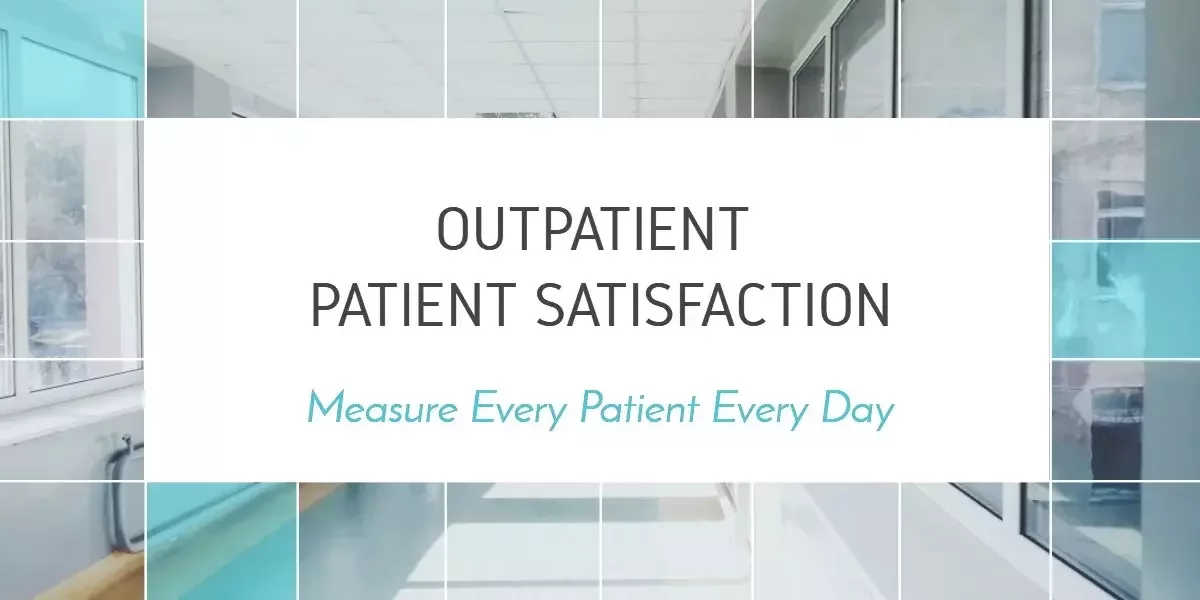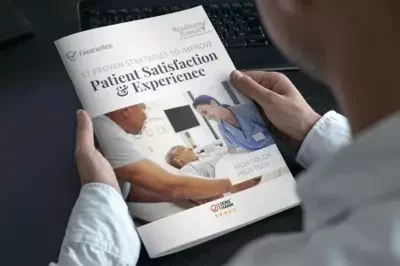
Outpatients
Measuring every outpatient every day - is it possible? We think so, which is why we've compiled this list of 5 things to consider when including outpatients as part of your patient satisfaction and experience strategy.
5 key considerations when designing an outpatient satisfaction protocol:
1. Outpatient Satisfaction - Do we care?
Seems this is an obvious YES.
A. These patients are either important current hospital customers or they will be.
B. Outpatients will be discussing hospital experience in the community contributing heavily to that elusive “reputation” measure.
C. Incremental to all of that, we simply need to know where we are meeting and exceeding expectations, so:
• we can celebrate the success and ensure we have those aspects hardwired in departments that achieve success.
• we can use the experience to share with other outpatient departments.
D. We also need to know where we are not meeting expectations, so:
• we can respond while the patient is still in our care.
• we can launch systematic performance improvement to correct any identified issues.
E. And of course there is how all of this plays out in patient satisfaction measures, CMS star ratings, etc.
2. Non-negotiable items
A. High Touch & High Tech - Any sustainable solution needs to incorporate both of these elements.
• High Touch – Must contain personal interaction. Yes, the world is getting more wired, but a significant portion of your customers is not necessarily heavily “wired.”
• High Tech – Without the smart application of technology, the effort will collapse under its own weight.
B. Service Recovery - It is about service improvement, not about collecting data.
• Service recovery is the primary aim. You are trying to identify service failures while the patient is still in your care and provide an appropriate response immediately.
C. Real-time – Every aspect must be in real time.
• No filling out forms or analyzing data to figure out what to do, just responding to service issues immediately.
• If it’s real-time correction,
• the problem is corrected with the patient before they leave the hospital.
• you can see at 5 pm (or anytime) what the results for today are.
• you can see if all today’s identified issues are corrected.
3. How Can this work?
A. What doesn’t work very well:
Many outpatient efforts are developed around volunteers collecting feedback at random. This approach can work well with the right staff collecting the comments. There are, however, two major flaws in this approach.
• You will simply never staff enough volunteers to cover every outpatient.
• Volunteers are typically not empowered enough to take effective corrective action.
• Most outpatient visits have a checkout process at the end of the visit, usually to schedule another appointment, collect co-payment, check on medications, etc.
• At that desk have a tablet/iPad with a user-friendly display to gather feedback.
• No more than 5 questions.
C. The process:
• Patient arrives at desk to check out.
• Person at desk, while preparing checkout, hands over the tablet/iPad and asks the patient to fill out simple feedback.
• Upon completion, they take the tablet/iPad back from the patient and can see immediately if there are any issues and correct them.
• If they cannot immediately correct…
• e.g. Patient is not clear when next appointment should be… the staff member can quickly direct them to the correct department for clarification.
• e.g. Social work support needed.
4. The Benefits
• Virtually no incremental cost. Maybe some small investment in tablets for each outpatient department.
• Opportunity to identify and correct any issues in real-time!
• Increased patient perception of care and hospital.
• Departments have immediate, believable feedback and accountability.
5. What Does this look like?
Intuitive:
• Must be self-evident how to complete.
• Must be electronic.
• Must be used all of the time.
• Must be electronic.
• Must be used all of the time.
Curious about our Outpatient Survey solution? Contact us for a demo
Don't forget that Outpatient Care is just one of The 17 Approaches to Improving Patient Satisfaction and Experience. Download the eBook now!

Previous Post: Medical Errors, How Do We Make Progress?

